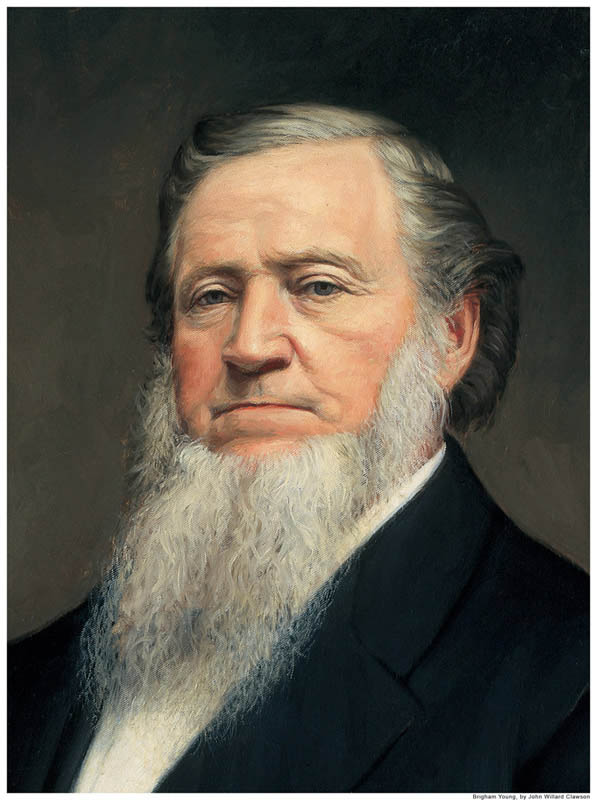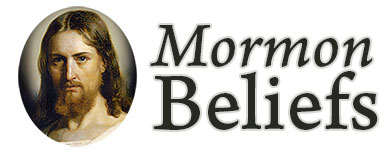The late Mormon prophet Gordon B Hinckley answered the question about Church policy on Mormon polygamy:
This Church has nothing whatever to do with those practicing polygamy. They are not members of this Church. . . . If any of our members are found to be practicing plural marriage, they are excommunicated, the most serious penalty the Church can impose. Not only are those so involved in direct violation of the civil law, they are in violation of the law of this Church.
Mormons do not practice polygamy or plural marriage and have not since 1890 (125 years ago), when Utah became a state. The Church of Jesus Christ of Latter-day Saints, whose members are often called “Mormons” or “Latter-day Saints,” wishes to be distinguished from groups that practice polygamy. In 2008, one such group (which in the 1990s registered itself as The Fundamentalist Church of Jesus Christ of Latter Day Saints) made the headlines because of underage marriages and possible child abuse occurring within the sect. The sect itself claims to be affiliated with the Mormon Church, but in reality it has no connection. Press reports have repeatedly referred to sect members as Mormons who are practicing Mormon polygamy. This is understandably very confusing to the public. The Associated Press style guide tells its reporters that the term Mormon “is not properly applied” to other churches that resulted from schisms occurring after founder Joseph Smith’s death. Such breakaway polygamist sects are small, reclusive, and have no prophetic guidance or priesthood authority.
 Mormon polygamy, however, was an important part of the teachings of the Church for fifty years. The practice began during the lifetime of founder and prophet Joseph Smith but became publicly and widely known during the time of 2nd prophet, Brigham Young. In 1831 Joseph Smith made a prayerful inquiry to the Lord regarding the ancient Old Testament practice of plural marriage. This resulted in the divine instruction to reinstitute the practice as a religious principle. The reason for this is that the current dispensation is the dispensation of the “fulness of times,” or the last dispensation before the second coming of Christ. It is a dispensation of the “restoration of all things,” when all gospel principles are to be restored in their fulness. The law of plural marriage, often called Mormon polygamy, is that it is right only when the Lord orders His children to keep the law, usually to raise up a righteous generation of offspring unto the Lord, or to provide for a large population of women.
Mormon polygamy, however, was an important part of the teachings of the Church for fifty years. The practice began during the lifetime of founder and prophet Joseph Smith but became publicly and widely known during the time of 2nd prophet, Brigham Young. In 1831 Joseph Smith made a prayerful inquiry to the Lord regarding the ancient Old Testament practice of plural marriage. This resulted in the divine instruction to reinstitute the practice as a religious principle. The reason for this is that the current dispensation is the dispensation of the “fulness of times,” or the last dispensation before the second coming of Christ. It is a dispensation of the “restoration of all things,” when all gospel principles are to be restored in their fulness. The law of plural marriage, often called Mormon polygamy, is that it is right only when the Lord orders His children to keep the law, usually to raise up a righteous generation of offspring unto the Lord, or to provide for a large population of women.
Joseph Smith, though he received the revelation regarding plural marriage in 1831, did not share the principle immediately. He himself was reticent and perhaps even fearful of living or causing other people to live according to the law. But the Lord made known that once the principle was revealed, it had to be kept. The revelation is recorded in the Doctrine and Covenants, Section 132:
Verily, thus saith the Lord unto you my servant Joseph, that inasmuch as you have inquired of my hand to know and understand wherein I, the Lord, justified my servants Abraham, Isaac, and Jacob, as also Moses, David, and Solomon, my servants, as touching the principle and doctrine of their having many wives and concubines– Behold, and lo, I am the Lord thy God, and will answer thee as touching this matter. Therefore, prepare thy heart to receive and obey the instructions which I am about to give unto you; for all those who have this law revealed unto them must obey the same. . . . Abraham received concubines, and they bore him children; and it was accounted unto him for righteousness, because they were given unto him, and he abode in my law; as Isaac also and Jacob did none other things than that which they were commanded; and because they did none other things than that which they were commanded, they have entered into their exaltation . . . David also received many wives and concubines, and also Solomon and Moses my servants, as also others of my servants, from the beginning of creation until this time; and in nothing did they sin save in those things which they received not of me. . . . I am the Lord thy God, and I gave unto thee, my servant Joseph, an appointment, and restore all things.
After God revealed the doctrine of plural marriage (Mormon polygamy) to Joseph Smith and commanded him to live it, the Prophet, over a period of years, cautiously taught the doctrine to some close associates. Eventually, he and a small number of Church leaders entered into plural marriages in the early years of the Church. The doctrine of Mormon polygamy and its practice were extremely difficult to accept, even for Joseph Smith. Brigham Young, after hearing the doctrine, said he envied the corpses in funeral processions, wishing he could trade places with them rather than embrace the doctrine of polygamy. Those who practiced plural marriage at that time, both male and female, experienced a significant trial of their faith. The practice was so foreign to them that they needed and received personal inspiration from God to help them obey the commandment. When the Saints moved west under the direction of Brigham Young, more Latter-day Saints entered into plural marriages, and yet, plural marriage was only practiced by a fraction of the membership of the Church.
Unlike the reclusive and male-dominated polygamous sects of today, 19th century plural marriage among members of The Church of Jesus Christ of Latter-day Saints was not controlled by the arbitrary authority of one individual. On the contrary, decisions related to marriage were settled by consideration of the feelings of all interested parties. Furthermore, the consent of individual women was always honored in any marriage proposal. Though there was some social and cultural pressure, it was not determinative. Both men and women were free to refuse offers of marriage they found unacceptable, and prophet Brigham Young, as governor, readily granted divorces. Women were granted considerable autonomy. In distinction to the cloistered isolation of today’s polygamous groups, Mormon culture in the 19th century was characterized by a vibrancy of productive activity in various fields of endeavor: education, industry, politics, community-building, agriculture, and many professions. Latter-day Saints strived to embrace modernity, not thwart it (Marlin K. Jensen, Church Historian).
Mormon Polygamy is Discontinued
In 1889 in the face of increasing hardships and the threat of government confiscation of Church property, including temples, Wilford Woodruff, president of the Church at the time, prayed for guidance. He was inspired to issue a document that officially ended the sanction of plural marriage by the Church. The document, called the Manifesto, was accepted by Church members in a general conference held in October, 1890 and is published in the Doctrine and Covenants as Official Declaration 1. Describing the reasons for the Manifesto, President Woodruff told Church members, “The Lord showed me by vision and revelation exactly what would take place if we did not stop this practice. If we had not stopped it, you would have had no use for . . . any of the men in this temple . . . for all (temple sacraments) would be stopped throughout the land. . . . Confusion would reign . . . and many men would be made prisoners. This trouble would have come upon the whole Church, and we should have been compelled to stop the practice.”
Since the Lord has commanded that the practice of plural marriage should be stopped, plural marriage is now against the law of God, even in countries where civil or religious law allows the practice of a man having more than one wife. The Church does not accept into membership those practicing plural marriage (LDS.org:Gospel Topics:Polygamy).
The standard doctrine of the Church is now, and always has been, monogamy. In the Book of Mormon it says, “Wherefore my brethren, hear me, and hearken to the word of the Lord: For there shall not any man among you have save it be one wife; and concubines he shall have none. . . . For if I will, saith the Lord of Hosts, raise up seed unto me, I will command my people; otherwise they shall hearken unto these things” (Jacob, chapter 2). In other words, the standard of the Lord’s people is monogamy unless the Lord reveals otherwise. Latter-day Saints believe the season the Church practiced Mormon polygamy was one of those exceptions.
Continuing Revelation & Plural Marriage
As I researched the principle of plural marriage, I realized that continuing revelation played an essential role as members of The Church of Jesus Christ of Latter-day Saints practiced this controversial principle. One of the most misunderstood aspects of this doctrine is not only the implementation but also the cessation of it. But both are […]
From Plural Marriage to Family History
As the 19th century was drawing to a close, the practice of plural marriage was also dwindling among members of The Church of Jesus Christ of Latter-day Saints. But as one stage of the Restoration of The Church of Jesus Christ was ending, another was beginning. The early Latter-day Saints knew they were laying the […]
